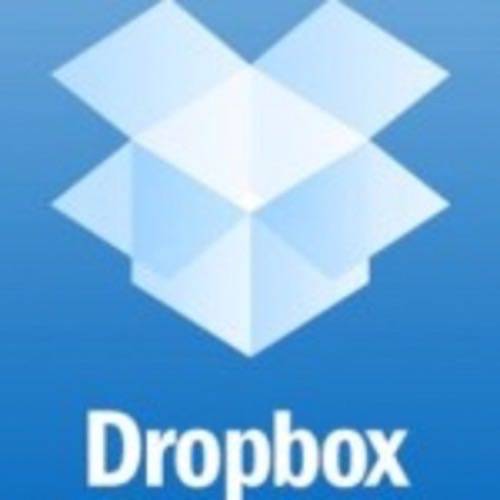Dropbox, the online file sync and sharing service, was recently named 5th in a list of the The World’s Most Valuable Startups by Business Insider. To put that in context, the only 4 companies ranked above Dropbox were (in order of valuation): Facebook, Zynga, Groupon and Twitter. Dropbox was listed above the likes of Wikipedia, Craigslist, Hulu and Tumblr. Business Insider estimated the value of Dropbox at $4 billion, based on its latest funding round at the end of August.

But let’s face it, this valuation of Dropbox cannot be relied on. That $4 billion is mostly derived from fat cat VCs competing for a hot deal. It’s far more important to ask: who is using Dropbox currently and is there anything in the use cases that justifies such a high valuation? So I asked the tech-savvy RWW community just that.
Dropbox became popular due to successfully tapping into two huge trends on the Web over the past few years:
1. People now access the Web on multiple devices; including the traditional PC, smartphones, tablets like iPad, Netbooks and more.
2. As Web-connected devices proliferated, it became increasingly useful to use cloud computing services for file management.
Startups have attempted to tap into this huge market opportunity as far back as 2006, when ReadWriteWeb named Sharpcast (now known as SugarSync, a Dropbox competitor) as our Most Promising Company. So Dropbox isn’t the only file sync service around. Some of the other products mentioned in my informal survey were SugarSync, Box.net, Ubuntu One and Wuala.

However it’s Dropbox that has emerged to become the leading file sync service, since launching to the public in September 2008.
Daily Users
Most of the feedback I gathered from Twitter, Google+ and Facebook indicated that Dropbox is a product that is used not only daily, but multiple times a day. That’s always a great sign for a startup.
Mickey Mellen is a heavy Dropbox user. Mellen told me via Google+ that he uses Dropbox about 100 times every day.
He has over 40,000 files in his Dropbox account, totalling over 30 GB in size. “It’s simply my primary drive,” he said. “Every file of mine goes in there, so that every device of mine (desktop, laptop, netbook, tablet, phone) has access to it.”
Tori Cushing
said that she uses it daily, “all through the day.” She has “just about all of the folders on my computer on Dropbox.”
Dylan Bland is another daily Dropbox user. He uses it as a “default directory for a lot of important saves.” He added, “we also use it at work to share common files.”
Campbell Yule
tweeted that he uses Dropbox “all the time, many, many times a day.” His main use case is “for file sharing across locations.”
ReadWriteWeb’s own Jon Mitchell is a heavy Dropbox user. “Nearly all my primary workflows sync across devices using Dropbox,” Jon remarked. Writing is of course Jon’s occupation and he told me that he works “entirely in .txt files that save to a Dropbox directory that I can get to and work on from any device.”
David Acklin said that for him, Dropbox is “always running, always backing up.”
Both Personal and Business Use
The responses suggested that Dropbox is being used for both personal and business file sharing. Michael Schade uses it to store personal files, although he said that many of his business files have “moved to Google for easier collaboration.”
But Dropbox is getting a lot of uptake for business collaboration, too. Ben Kepes
said that he uses Dropbox multiple times a day, for “collaborating on docs across timezones and geographies.”
Professional photographer Gareth Robins uses it every day for a variety of uses, including a shared folder with his accountant and another with his photographer assistant. He also uses it to deliver photos to his clients. He puts the photos in a Dropbox folder and shares the link with them.
My friend Emily Davidow told me on Facebook that she uses Dropbox “regularly for multiple shared projects.”
Less Frequent Users
Others use Dropbox less regularly. I myself am in that camp. I currently use Dropbox to save files (mostly PDFs) that I want to read on my iPad. However I’m interested to expand my usage, now that I’ve heard how others are using it.
RWW writer (and part-time musician) John Paul Titlow tweeted that he uses Dropbox about weekly, “for household file-sharing, exchanging sound clips w/ bandmates and sending very large files occasionally.”
Kim Sherrell told me on Google+ that she uses Dropbox “once in a while.” She noted, “I’m reluctant to share resources when I’m editing or working on big files.”
Workflow & Ease of Use
As Brian Ries rightly pointed out, how much you use Dropbox depends on how integrated it is in your workflow.
The ease of use of Dropbox was another factor that people commented on. “Dropbox just works,” remarked Bill Kirby.
That’s an important point, because syncing in the modern Web is too often an irksome process full of glitches. Indeed ever since I “upgraded” to Mac OS X Lion, I’ve noticed that home sharing (Apple’s way of syncing your iTunes account across devices, among other things) has been very buggy.
Like any startup that is scaling up fast, Dropbox has its challenges. Dave Parry, an Assistant Professor at the University of Texas, blogged earlier this year about privacy concerns. But overall, the feedback I gathered from Twitter, Google+ and Facebook was overwhelmingly positive. Many respondents said that they use Dropbox multiple times a day, for both business and personal file sync and sharing.
Big Market – And So Far Dropbox is Delivering…
File sync and sharing is a potentially huge market, which we identified back in 2006 when we named Sharpcast as our Most Promising Company. Dropbox has become the leader in this space, due to its generally frictionless service and excellent usability. Indeed, its usability across multiple devices is probably what has kept it one step ahead of cloud computing giants, such as Amazon, Google and Microsoft.
Whether it’s worth $4 billion is another matter. Judging on the product alone though, Dropbox has carved out a great niche and it has a good chance of becoming a very valuable company. Let us know what you think of Dropbox’s value, in the comments.





















